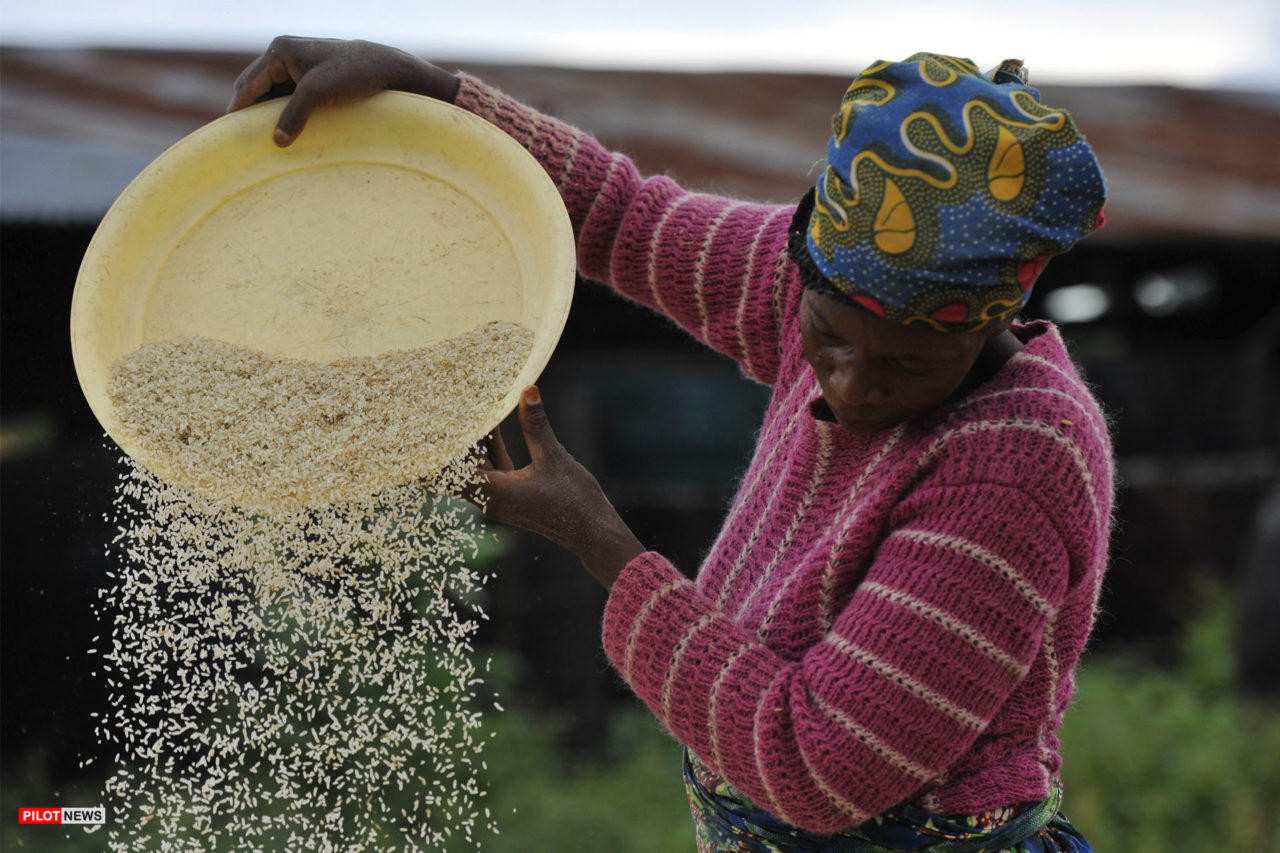If you recently stumbled across what is loosely known as “African Twitter,” or other African social media spaces, you might have seen repeated mentions of Jollof rice. It’s a big deal, and a cause of endless banter for those on the continent, and in the diaspora.
Jollof rice is a spiced dish, simmered in reduced tomatoes, onions, peppers, and different seasonings depending on where it’s made. It’s an iconic dish, with massive regional significance across West Africa and a staple in celebratory social gatherings, including at Lagos parties in Nigeria. The dark-orange spicy rice dish can be eaten by itself, but also be enjoyed along with side dishes, including fried plantains.
On social media, the famous #JollofWars, a long-running smack talk contest between West Africans on who has the best version of the dish, has been brutal and merciless, with some international celebrities even weighing into the “battle”.

How Jollof was born
The most adopted theory for the expansion of the dish explains Jollof Rice as having its origins in the Senegambia region of west Africa, in the ancient Wolof or Jolof Empire, during the 14th-16th century. The former empire is located in what is considered to be parts of modern-day Senegal, The Gambia, and Mauritania.
With rice farming being prominent across the Senegal river, this region became known as the grain coast. In 1448, the Portuguese developed trading posts by the river, and introduced goods, including tomatoes, which would become essential to the development of the dish.
In Senegal, which is widely considered to be the motherland of Jollof rice, nationals enjoys Thieboudienne, a broken-rice meal believed to be a precursor to the dish. The Senegalese dish is considered to have been an accidental creation by Penda Mbaye, a cook based near the Senegal River delta and Portuguese trading posts, after a shortage of barley forced her to use rice for cooking. But the spread of Jollof, also named Benachin or “one pot,” meant that regional changes also influenced differences in the recipe.

Today, the significance Jollof rice is not only felt in West and Central Africa, but also in the American south, where millions of West African slaves from rice-growing regions were traded for labor with the commencement of the transatlantic slave trade. Slaves brought with them the region’s agricultural techniques and rice influences to the new world, and modern-day, red-based, southern rice dishes, including Jambalaya and Gumbo, are believed to have been influenced by the African dish.
#JollofWars from Quest to Zuckerberg
The real-life banter over which African country has the best version of the dish is long lasting, but the online bickering blossomed in 2014 when a Twitter user tweeted the hashtag #JollofWars to compare his mothers and his girlfriends version of the dish. Since then, Africans from nearly all Jollof-eating countries have chimed in to compare their version of Jollof, with the most intense smack talk happening between Nigerians and Ghanaians.
In 2014, when British TV chef Jamie Oliver released his own version of Jollof rice, a recipe with non-traditional ingredients including coriander and cherry tomatoes, both groups set aside their rivalries for a unified stance against what they saw as an abomination for an incident which was dubbed #Jollofgate.
Merely two years later, Ghanaian musician Sister Deborah released “Ghana Jollof,” a catchy song which took several digs at Nigerian Jollof, and claimed Ghana’s version of the dish to be much, much more superior. The quirky tune is filled with gut-punching lines for her neighbors to the east, with Sister Deborah singing Nigerian Jollof “tastes funny,” and claiming, similar to Kelis’ milkshakes, that her Jollof brings all the boys to the yard.
Jollof rice had another international moment when Mark Zuckerberg visited Nigeria, and declared that the country’s version of the dish to be “awesome.” The moment of external validation was a sweet moment for the West African country, where that same year Nigerians called for the resignation of the country’s information minister, Lai Mohammed, after he accidentally said Senegal’s version of the dish was superior in a live interview with CNN.
Over the past few years, the online smack talk has turned into major pan-African festivals, with Jollof-themed competitions popping up in major cities including, London, Washington DC, and New York.

“Our own is better”
- In Ghana: Jollof rice is made with basmati or thai rice, with warm spices like clove, nutmeg or cinnamon. Ghanaians are also likely to use the same protein stock, including chicken or beef, to simmer their dish.
- In Nigeria: Pureed tomatoes, habaneros, red bell peppers and onions, along with parboiled long grain rice is used in the dish. To accommodate a large group of guests, the party version of Jollof is also cooked in cast iron pots over firewood, giving it a smokey flavor served at parties with fried plantains and moin moin (steamed bean pudding).
- In Senegal: Cooks are likely to use tamarind, and additional palm oil to the base of the cooking pan, which gives the dish a crusty edge.
- In Cameroon: Jollof Rice tends to be made with beef, and enjoyed with carrots and green beans.
- In Liberia: This West African country treasures their hot peppers, and along with mixed vegetables and proteins, including beef, they use lots of it in their Jollof recipes.
Now that we have the regional differences understood, the million-dollar question still remains to be unanswered.
- Ex-Governor Yahaya Bello Declared Wanted by EFCC - April 18, 2024
- Committee Offers Solutions for Decongesting Correctional Centres In Anambra - April 18, 2024
- BREAKING: Gunmen kill Traffic official in Anambra, Zoom Off - April 18, 2024


